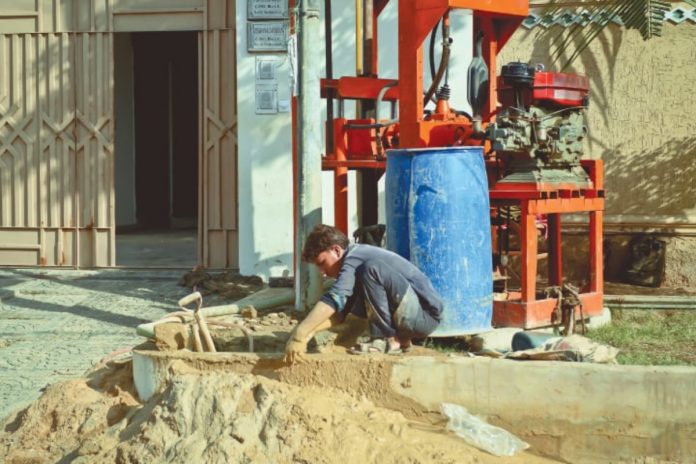KARACHI: As Karachi continues to struggle with an unrelenting water shortage, the practice of underground water boring has become a lifeline for many.
Yet, growing concern is now emerging over whether this widespread solution is quietly contributing to a new and alarming problem, a rising number of small-scale earthquakes in the city.
Since June 1, eastern parts of Karachi, including Landhi, Malir, Korangi, and Quaidabad, have recorded 57 minor tremors, ranging between 1.5 and 3.8 in magnitude, according to Chief Meteorologist Ameer Haider Laghari.
Though these quakes have not caused any major damage, their repeated occurrence has left residents unsettled and worried.
Over time, the demand for water in these areas has led to an increase in underground extraction. With little access to a consistent municipal supply, communities, businesses, and RO (Reverse Osmosis) plants have heavily turned to boring as their primary source.
As a result, experts say the ground in many parts of the city has started to sink, a phenomenon known as land subsidence.
While no conclusive scientific link has been established between the frequent tremors and underground water boring, specialists stress that the correlation is worth investigating.
Dr. Adnan Khan from the University of Karachi’s Geology Department noted, “Land in areas like Landhi, Korangi, Malir, Defence, and North Karachi has subsided by 15 centimeters and is sinking at an annual rate of 1.5 centimeters.”
He attributed this primarily to unchecked underground water extraction in areas with inadequate infrastructure.
Dr. Nauman Ahmed, a professor at NED University, pointed out that though earthquakes are part of a broader geological process and can’t be directly tied to boring, the heavy reliance on underground water has likely weakened the stability of the ground in affected areas.
“As water is extracted from beneath the surface, a void is created, which makes the natural underground position vulnerable, weakening the foundations of houses.
These factors increase the risk of structural damage in these areas during earthquakes or otherwise,” he said.
Dr. Ahmed further called on the authorities to conduct a thorough survey of the affected zones to assess how much damage has already been done and to take preventive measures moving forward.
Dr. Khan also highlighted that while natural plate movements may be the main reason behind the land’s sinking, there’s a noticeable overlap between areas experiencing earthquakes and those relying heavily on boring.
“Scientific research suggests that tectonic plate movement at local fault lines is causing land subsidence.
However, it is under observation that excessive underground water extraction is occurring in areas like Landhi, Malir, and Korangi, where earthquakes are also being recorded, and the land is sinking. A detailed study is required to determine the exact cause,” he said.
Echoing these concerns, Dr. Masood Rafi, Chairman of NED University’s Earthquake Engineering Department, identified two leading contributors to the problem: rampant construction and excessive underground water use.
He explained that the pressure from buildings, both small and large, combined with the depletion of water reserves, is placing strain on already fragile ground conditions.
“Due to the water crisis in many areas, residents have resorted to alternative methods, such as boring, to extract underground water.
Additionally, reverse osmosis (RO) plants have been established at many locations for drinking water, exacerbating the depletion of underground reserves and creating voids beneath the surface.
The weight of newly constructed buildings further increases underground pressure, contributing to land subsidence. Therefore, it is imperative to halt underground water extraction to prevent further damage,” said Dr. Rafi.
While local fault lines may not pose a significant threat on their own, Dr. Khan warned that Karachi’s position near a complex and active tectonic zone could expose it to powerful shocks from distant quakes.
“Strong earthquakes in these regions could cause destruction across Karachi, which is part of the Indian tectonic plate. About 110 kilometers west of the city lies a point where three plates: the Indian, Eurasian, and Arabian intersect.
The Arabian plate subducts beneath the other two from the south. If earthquakes occur in this region, their effects could also impact Karachi,” he explained.
As the city continues to face dual pressures of water scarcity and increasing seismic activity, experts are urging both immediate and long-term action to mitigate risk, starting with re-evaluating Karachi’s dependence on underground water.
